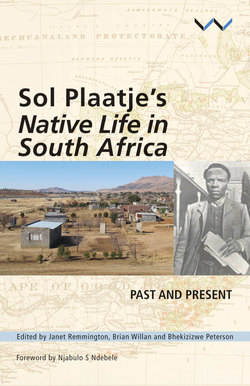Читать книгу Sol Plaatje's Native Life in South Africa - Jacob Dlamini - Страница 21
На сайте Литреса книга снята с продажи.
Native Life in North America
ОглавлениеAfter Britain and South Africa, Native Life made its biggest impact in the United States of America. Like many of his contemporaries Plaatje had long been fascinated with the situation of African Americans, and its relevance to the lives of his own people, and he had planned a visit to the US in 1914. The outbreak of war put an end to this but he did make contact with W E B Du Bois, the African American leader and editor of The Crisis, organ of the National Association for the Advancement of Colored People (NAACP). The Crisis sold and distributed books relating to Africa as well as African Americans and so Plaatje had a shipment sent over. Native Life's publication was announced in The Crisis in August 1916, which described it as ‘a detailed explanation of the disabilities suffered by natives under the Union of South Africa’ and ‘a most stirring narration’. In December it first appeared in the regular list of books for sale via The Crisis, priced at $1.50 a copy.
It was not until Plaatje himself was able to travel to the United States five years later, however, that Native Life began to make the kind of impact he had hoped for. This visit followed a second SANNC deputation to Great Britain in 1919. He planned a follow-up volume to Native Life, and worked on this in 1919 and 1920, but it never materialised. He moved on to the US in January 1921, spending three months in Canada immediately prior to this.21
By this time Native Life was into its fourth edition, 600 copies having accompanied Plaatje on his voyage across the Atlantic. Remarkably, he managed to sell, so he reported, 400 copies of the book in Canada alone, ‘around two-thirds of them,’ he noted, being ‘sold to Coloured People’, and its price now increased to $2.22 He continued to sell substantial numbers during his first few months in the United States, and it is clear that it made an impression on several prominent African American figures. John E Bruce, for example, a journalist and long-standing correspondent of Plaatje's, thought that if Native Life ‘doesn't make your blood boil you are not of African descent’. John W Cromwell, even more fulsome, wrote that the book and its author ‘have impressed me to no little degree’. ‘It is a very sad story indeed which is told in this wonderful book by this very talented man, who comes here at a most auspicious moment to let the American people know of the conditions under which the Natives are now laboring in South Africa.’23
For a while, sales of Native Life continued to go well. Plaatje himself spoke at meetings of the NAACP, at Marcus Garvey's Universal Negro Improvement Association (UNIA) and at a variety of church gatherings, which provided the opportunity to make sales, the proceeds being used to support himself and his family back home in South Africa. His publications were also stocked by Young's Book Exchange, ‘The Mecca of Literature pertaining to Colored People’, as it called itself, the first African American bookshop in Harlem, New York. A fifth and final edition of Native Life was printed in 1921 but, as time went on, sales were harder to come by. Ill health restricted the number of meetings Plaatje was able to address, economic conditions in the USA deteriorated and inevitably the novelty of his message began to wear off. Whereas in 1921, he wrote, he could get forty or fifty dollars from sales, by the time he left the USA in July 1922 he could ‘hardly get eight or ten, and when I previously sold books like ice cream in August I could now scarcely sell a pamphlet’.24
